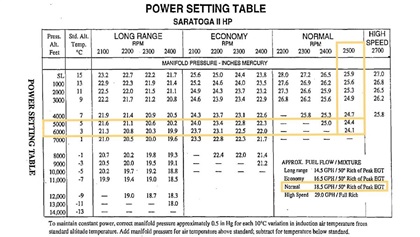Proficiency: Learning to call BS
If it sounds too good to be true…

Medical researchers tell us that a glass of wine each day promotes good health. They justify the statement using appropriate scientific and statistical processes from their impressive education. For those of us without that training, the techniques constitute a black box. If we trust the researchers, we drink up with confidence. If what they advocate seems too good to be true, we call BS and investigate further before pouring yet another glass of pinot noir.
What do black boxes and calling BS have to do with flying airplanes? More than you might imagine.
On a recent practical exam, my candidate Penny shared an instrument flight she had planned from Mesquite, Nevada, (67L) to Burbank, California (BUR). Like many instrument rating candidates, she completed all flight planning items using the software on her tablet. The scenario that day involved a 200-foot ceiling over Mesquite so Penny planned to obtain her clearance on the ground and incorporated the obstacle departure procedure in her plan. When asked the fuel quantity required for the trip, Penny related a value that seemed so preposterously low my BS alarm blared in my head.
“Are you sure about that?”
“Well, that’s what the software is telling me,” she responded. I suggested we pull out the aircraft operating handbook and verify the results.
It soon became evident Penny didn’t understand how to use the performance charts, and that’s a big problem. By her inability to verify the results, the fuel calculation algorithm had become a black box, and she blindly trusted the values from her EFB. In her case, the procedure was correct but the data the algorithm employed were not—so it was a case of garbage in, garbage out. A notice of disapproval isn’t fun for the candidate or the examiner, but I console myself with the idea that it beats reading about another fuel-exhaustion accident in the news.
Remember too that an aircraft performance profile is merely a snapshot in time. Not only do we add and remove equipment that may affect the performance, but wear and tear take a toll as well.As a designated examiner, I give practical exams in many different aircraft and I can’t possibly know the performance information on all those platforms. Candidates will compute many estimates for the flight including takeoff distances, cruise speeds, time estimates, and required fuel. If they all seem reasonable based on my experience with similar models, I randomly select a few that they verify using the pilot’s operating handbook to ensure that the candidate has a facility with the charts and calculations. For those that don’t seem reasonable, I call BS and press for more details.
Penny’s airplane was an older Cessna 172 that had been upgraded with a 195-horsepower Lycoming engine. She used the aircraft profile for the original version with a less powerful, and therefore less thirsty, engine. Interestingly, from the standard profiles provided in the EFB app, there was probably no way for her to choose a single one that made sense for all performance calculations. For any airplane that has been modified, such as with a different engine or the addition of a STOL kit, it’s possible that none of the aircraft profiles loaded in the EFB is appropriate. In this case, a custom profile should be set up in the EFB that is reasonably accurate, and corroborating the results with information from actual flights is imperative.
Remember too that an aircraft performance profile is merely a snapshot in time. Not only do we add and remove equipment that may affect the performance, but wear and tear take a toll as well. Several years ago, I had the engine overhauled in my Cessna and found the change in performance shocking; it’s unreasonable to expect the same performance over the life of an engine. In “Hopefully Optimistic: Complex Calculations Using Your Airplane’s POH” (July 2019 AOPA Pilot), Dave Hirschman reports needing 30 percent more takeoff distance than ForeFlight calculated based on the aircraft profile for his own airplane. Hirschman’s advice included adding at least 50 percent to those numbers.
While EFBs are wonderful tools, their use does not relieve us of the responsibility to verify their accuracy and add a healthy safety buffer. If it’s been a while since you’ve consulted the charts in your pilot’s operating handbook, it’s possible that you’ve let black boxes creep into your own flight planning process.
Relearning those algorithms might seem daunting; if so, resolve to compute one different item, such as cruise airspeed (see facing page), for each upcoming flight. Often the charts give examples that you can mimic in forming your own computations. After several flights, you will be able to verify all the information your EFB provides. Beyond that, you’ll be in tune with your aircraft performance and hone your ability to call BS—and investigate further when the need arises.


